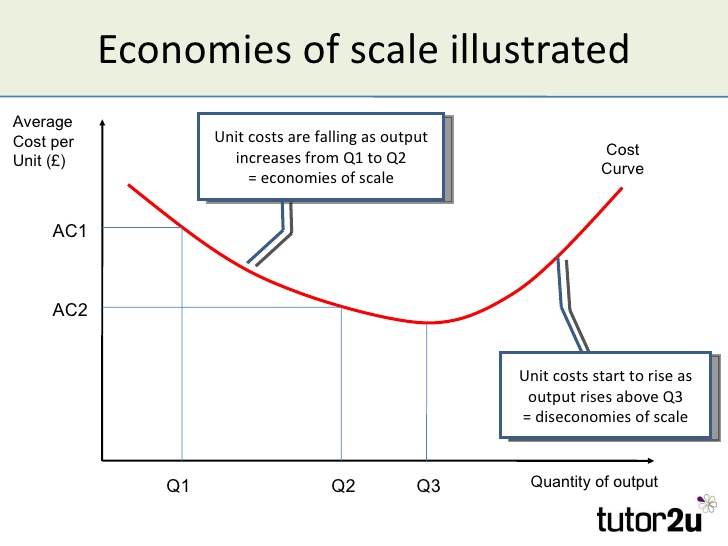Contents:


In addition, assessing the products of the competitors also ensures the successful implementation of this strategy. In terms of pricing strategy, price skimming is the opposite of the penetration pricing model for newly launched products. Instead of introducing products at a lower price, firms using price skimming effectively judge consumer perception and launch their products with a higher than usual markup. Price skimming strategy is something that helps firms to widen their market reach and make more profits. The ‘skimmed’ price tests the patience of consumers, and brands get the opportunity to realise the product’s value.
With its razors often given away for free or priced lower than its competitors, it has been able to retain its position as a market leader for years. The profits Gillette loses from selling its razors for low prices, it gains from razor blades, attachments, and accessories that are priced at a premium. Almost every revolutionary technology product like smart TV, electric vehicles and smartphones is released with a price skimming pricing model. However, firms can limit their growth and revenue generation if their products are not effective enough to make a change. Products that face tough competition are therefore not launched with such strategies.
Price Skimming Examples
Not only does it define your early monetization price skimming examples in india, but it also heavily influences what market segments you’re likely to appeal to directly and how your product will be perceived. As a result, millions of users shifted from their existing network providers and moved to the new company. Subsequently, all other players reduced their pricing to around $15-$20 per month to retain what was left of their customer base. Penetration pricing is a pricing policy a new entrant in the market utilizes. In this policy, the product’s price is fixed at lower levels to obtain market share. But, early adopters of new technology can be the first to gain a new type of tv – if they are willing to pay a higher price.
Apple iPhone, for example, has a separate market that caters to customers’ desire to own a premium product. High-tech industries tend to spend enormous amounts on research and development. With the launch of their products at higher prices, they also recover their promotional and marketing expenses invested.
Let’s take the example of Apple Inc., a developer of hardware products like iPhone and Macintosh computers. A market comprises of many competitors that are working in the same niche as you are; pricing your product or service becomes a very crucial stage in such circumstances. It is because if you launch your product with the skimming strategy, and the competitors came after with the price penetration strategy, then it would be a great set back.
What is Price Skimming? Pros & Cons of the Strategy
Imagine the cost of your brand-new smartphone falling by $300 overnight. Right after the release, your product is likely to have minimal direct counterparts on the market. By the time the competition for your product appears, you will have your reputation established thanks to a group of satisfied customers. At this point, you will be ready to switch your positioning to lower market segments.
Hubstaff has a popular product and a wide user base incorporating multiple market segments—so let’s see if a move to skimming would be a good fit for them. From the DVD player to the smartphone and even the smart TV and Teslas, revolutionary technology products like these are almost expected to be rolled out with a skimming pricing model. And the general market tends to be excited rather than annoyed when the price drops. One of the biggest perks of a well-implemented skimming strategy is the ability to change your price as the market shifts. Starting off high, you can determine how price sensitive your buyers are and offload as much inventory as possible at the highest profit margin. When price skimming is their tactic, companies know that their market share will be small to start.
If you have many competitors, the demand curve is quite elastic, so high prices may repel customers. The first one would be competitive pricing but right next to it is its price skimming strategy. There is no unique answer, but it is trou that price skimming works better for some types of products than for others. Products that are connected to the innovations and are launched regularly are the best fit for skimming prices. For example, tech or fashion industries’ companies have great results when doing the product pricing this way. In the following paragraphs, we will define price skimming, explain how it works and when is it appropriate.

It makes the old customers furious who have paid a higher price for the same product. Apple had to face the same backlash from customers back in 2007 when the company reduced the price of iPad 33%. This pricing strategy is mostly used by companies that develop new products, so at the launch moment, there is almost no competition and therefore no pricing pressure. Penetration pricing is a marketing strategy implemented to draw customers to a new product or service. When a new product enters the market, such as a new form of home technology, the price can affect buyer perception. Often, items priced towards the higher end suggest quality and exclusivity.
The company provoked an entire paradigm shift in the SaaS industry to power its pricing strategy. Salesforce was the first company of its kind to make its CRM available at all times through the cloud. The radical nature of its cloud product made Salesforce a prime example of a company whose tech justified a price-skimming strategy. The strategy intends to extract maximum profit by selling a product or service at a very high price, in contrast to the prevailing competitive price in the market. When it gets saturated, the suppliers will reduce the price and target the next layer of more price-sensitive customers than early adopters.
What brands use a price skimming strategy?
However, if a customer buys the same phone a year or even just a few months later, they could get it at a much lower price. Market PriceMarket price refers to the current price prevailing in the market at which goods, services, or assets are purchased or sold. The price point at which the supply of a commodity matches its demand in the market becomes its market price. Pricing your product is a very crucial part of the decision making of business after the manufacturing. Entrepreneurs and business owners have different types of pricing strategies to choose from while keeping in mind the overall objectives of the business. Lowering the price would have only a minor effect on increasing sales volume and reducing unit costs.
- Despite having multiple factors that help a company grow a fresh customer base, it has its share of risks and hassles as well.
- Tap into our retail dataset of over 1 billion SKUs across 190,000 brands powered by proprietary AI-driven algorithms.
- With the introduction of Lumix G1, Panasonic effectively created a separate market base that was later exploited by all other camera manufacturers.
- At the moment the 8K TV market is aimed at the high-income and those with inelastic demand.
- Under the economy pricing strategy, your company charges as little as possible to entice the largest number of potential customers.
- Skim pricing is the inverse of penetration pricing, which involves pricing newly launched products low in order to build a large customer base from the start.
Samsung still leads the smartphone market in 2017 with shipments of 79.8 million units in 2Q17, a rise of 1.4% YoY compared to 78.6 million units in 2Q16. By using one or more of the pricing strategies discussed above, you can increase your profits and grow your business. Flexible pricing systems often use technology to generate the best rates depending on market factors. While this makes it easier to maximize profits, gathering the data necessary to implement dynamic pricing may be too time-consuming or expensive for small businesses. Dynamic pricing is a pricing strategy that’s variable instead of fixed. This means that, depending on the time or other external factors, prices can and will fluctuate.
Hence, many companies which are innovative will use the skimming price strategy. In a market heavily driven by consumer trust and brand loyalty, many consumers are reluctant to switch brands or try new products. The barriers to entry in a retail market are very high both due to the heavy competition and demanding consumer base. Retailers need to think outside the box to make waves in the market to catch the attention of potential customers and convert them into loyal consumers.
What are ages of consent around the world? Japan to raise age from 13 to 16 – Yahoo News UK
What are ages of consent around the world? Japan to raise age from 13 to 16.
Posted: Tue, 21 Feb 2023 08:00:00 GMT [source]
If your business has spent a lot of resources, producing something innovative and creative, and it would be justifiable to charge higher, in the end, to cover up the initial cost. Tech companies like Apple, Google, Samsung, and Huawei employ hundreds of employees in their research and development programs. They spent billions of dollars annually in their search for launching innovative products and services. On the other hand, price penetration is the strategy where marketers lower the price of its products and service, with the plan of grabbing a great market share. It usually happens in the category of common low-priced items; like ordinary household products.
Skim pricing is the inverse of penetration pricing, which involves pricing newly launched products low in order to build a large customer base from the start. Penetration pricing is generally used when demand for a new product or service is projected to be high. The hope is that the sales volume will make up for the below-average cost. By using geographical pricing, captive product pricing and dynamic/flexible pricing, you can charge customers different prices based on certain criteria.
Other Kinds of Pricing Strategy
This may help attract early adopters who are willing to spend more for a product and can also provide useful word-of-mouth marketing campaigns. High competition means that the sales numbers of the product/service are affected upon the lowering or increasing of its prices. Competition causes the goods to follow an elastic demand curve which makes it unsuitable for implementing price skimming. You should, however, carefully consider whether your company is best placed to accommodate the demands of price skimming. It is an exacting strategy, and one that requires a lot from your side. Even if it’s not the best pricing strategy for you, for now, don’t worry —there are plenty of others.
Compare the numbers to eight other pricing models, including penetration, value-based, and premium pricing, to choose the best one for your business. When a seller enters an existing market of a current product, he may find it difficult to attract customers being a newcomer. Such a seller can introduce penetration pricing and reduce its product prices for an initial period to attract customers to leave the competitors and connect with the seller. Sellers usually adopt this strategy for a particular set of products and simultaneously continue to sell the other products at their normal prices to maintain a reasonable profitability margin.
With Dennis Kucinich on the Financialized Economy, Collapse – Michael Hudson
With Dennis Kucinich on the Financialized Economy, Collapse.
Posted: Tue, 21 Mar 2023 07:00:00 GMT [source]
With the passing of time, prices of the IPhone 4s have decreased gradually, such that nowadays many people can afford an iPhone. Other OTT platforms are following suit by deploying penetration pricing to attract new customers. – Definition, Examples, and Journal Entry Prepaid expenses represent payments made in advance for products or services expected to be incurre… The initial launch price of Sony’s PlayStation 3 was around Rs. 45,000, with its principal rival XBOX 360 selling its product at an initially lower price. However, PlayStation 3’s price gradually dropped to Rs. 25,000 when XBOX rivaled PS3 with their simpler approach to gaming and increased compatibility. Thus, a mature market automatically makes room for newly released products and looks forward to discounts.
Here, the price and the quantity expected to be sold are represented on the vertical and horizontal axes. If the price is further reduced to P2, more quantities, i.e., Q2, could have been sold. Thus, the graph represents that a lower price attracts the sale of a higher quantity, which is the subject matter in the case of penetration pricing. The diagram below gives us a clear understanding of the penetration pricing policy.
If a seller comes to the current product’s existing market, he must attract customers as a newcomer. Part of the fall in price could be due to improved technology and lower costs of production. Rice skimming is also a form of price discrimination, which is the practice of selling the same product at different prices to different groups of customers.
This enables a firm to quickly recover its sunk costs before increased competition and pricing pressure arise. Many new foods are introduced to the market with a penetration pricing strategy. Some businesses even give packages of new products away by, for example, sponsoring events and providing sample packs to attendees. When you enter a supermarket, you often also see advertisements for introductory low prices for some fresh items, which are the perfect examples of penetration pricing. Costco and Kroger implement penetration pricing for the organic products they sell, to increase demand for these products. As there is a higher margin on organic products and due to economies of scale, these supermarket chains make money through increased demand and high sales volumes.